By Ivanna Carrillo-Siller
In the 2022 NCR-Stat Baseline Survey, the NCRCRD examined people’s perception of diversity, equity, and inclusion in their local communities in the North Central Region (NCR).[1] Respondents were asked to estimate their agreement on whether equal access to education for residents of all backgrounds is met in their communities by choosing strongly agree, agree, neutral, disagree, and strongly disagree.[2] Figure 1 shows that the majority of respondents (62%), agree that their local community provides equal access to education for residents of all backgrounds, while only 9% of respondents disagree equal access is being met.
Figure 1. Equal access to education in local communities of the North Central Region (N=4,628)
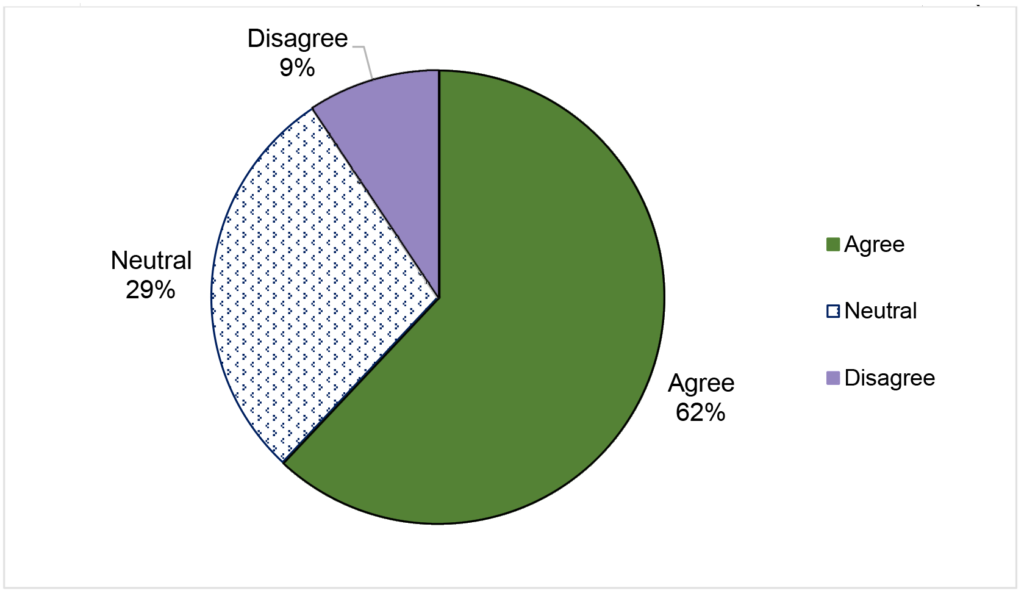
Source: NCR-Stat Baseline Survey, 2022
To give the analysis a further look, perception is then divided by respondents’ race. Figure 2 shows that White and Asian respondents have the highest share of those who agree that access to education in their community is equal (64% and 61%, respectively), followed by the Black or African American group of respondents (56%). Less than half of American Indian or Alaska Natives respondents agree with the statement of equal community-based educational opportunities and is the group with the lowest agreement out of all (45%).
Figure 2. Equal access to education in local communities of the North Central Region by respondents’ race (N=4,628)
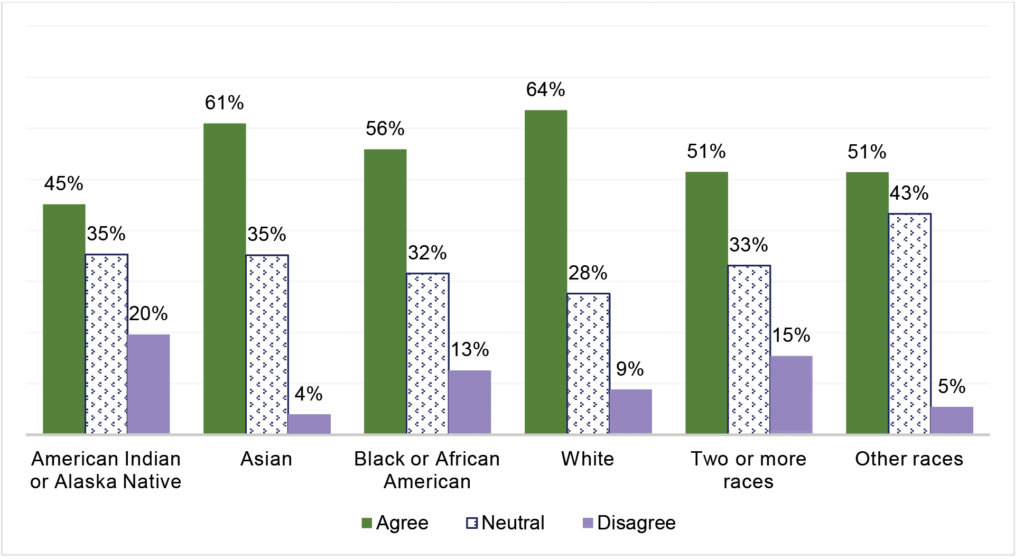
Source: NCR-Stat Baseline Survey, 2022
The number of respondents of all races that remain neutral to the question ranges from 28% for White respondents to 43% for respondents that selected ‘Other races’.[3] “Neutral” as a response might suggest that either the respondents are not strongly involved in the community and cannot give an informed answer or they tend to agree or disagree without wanting to choose one or another option for some reason, unwilling to leave the question unanswered. Asian respondents have the lowest percentage of disagreement (4%), followed by the category ‘Other races’ (5%). American Indian or Alaskan Natives represent the highest percentage of disagreement with 20%.
Figure 3 shows respondents’ perception related to educational access by ethnicity as an important demographic aspect. Hispanic or Latino respondents remain neutral and disagree in a higher percentage than their non-Hispanic counterparts, with 35% and 15%, respectively.
Figure 3. Equal access to education in local communities of the North Central Region by respondents’ ethnicity (N=4,628)
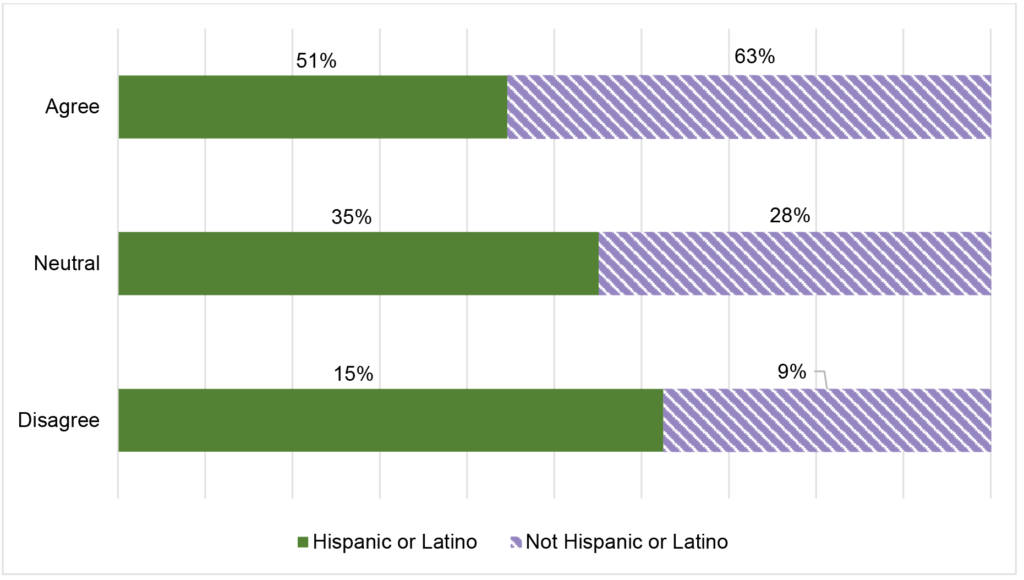
Source: NCR-Stat Baseline Survey, 2022
Gender is another demographic characteristic analyzed in terms of people’s diversity, equity, and inclusion perception (Figure 4).[4]
Men agree more than women, that is 67% for men and 60% for women, that education is provided equally for residents of all backgrounds in their local community. On the other hand, a higher share of women than men are neutral to the question and disagree that the community provides equal education to the community residents.
Figure 4. Equal Access to education in local communities of the North Central Region by respondents’ gender identity (N=4,603)
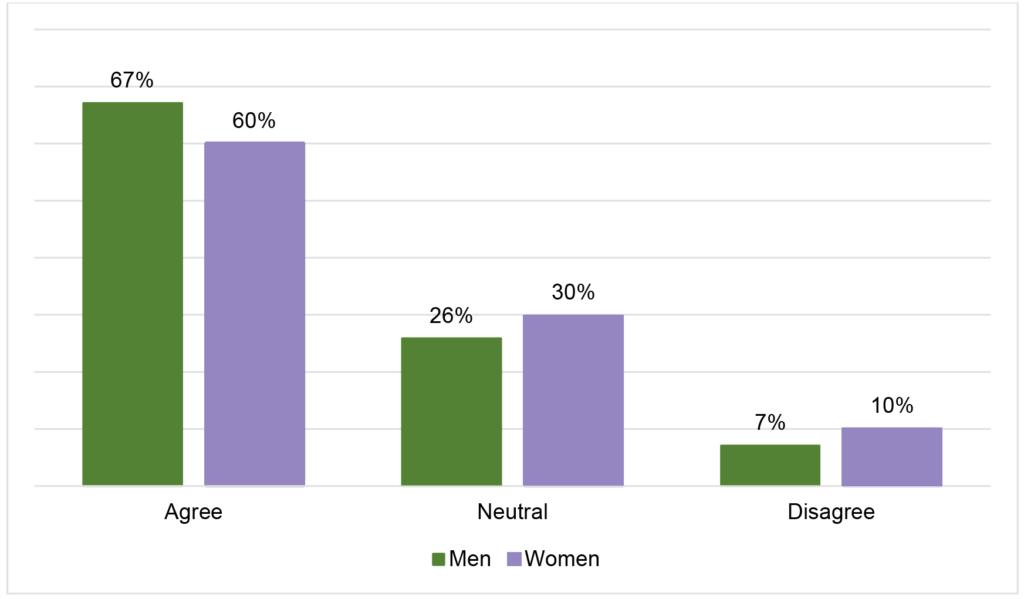
Source: NCR-Stat Baseline Survey, 2022
Considering household demographics, responses regarding equal access to education in their community were analyzed by the community location in an urban, suburban, or rural area of the NCR. The spatial distribution of responses remains consistent across all three types of locations (Figure 5). The main difference can be noticed in the percentage of agreement in urban communities. Urban respondents have the lowest share of those (58%) who agree with equal community-based educational opportunities, while suburban respondents take the lead with 65%. In addition, urban respondents have the highest percentage of ‘Neutral’ and ‘Disagree’ responses, with 30% and 12%, respectively.
Figure 5. Equal access to education in local communities of the North Central Region by respondents’ current residential location (N=4,619)
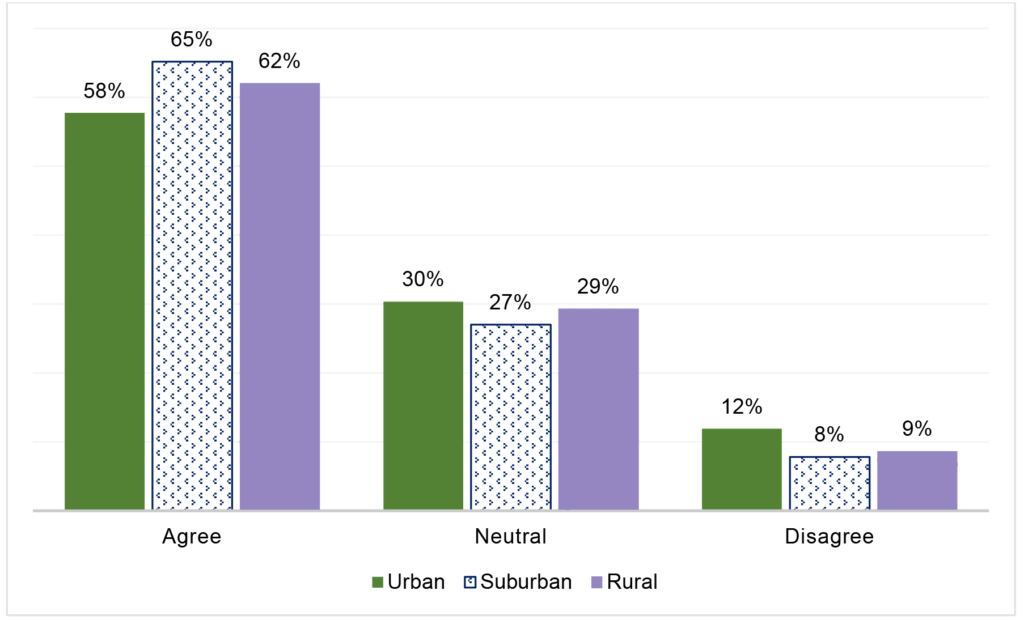
Source: NCR-Stat Baseline Survey, 2022
Household total income is analyzed to learn more about respondents’ perception of equal access to education for residents of all backgrounds across income groups. Figure 6 shows the shares of respondents who agreed with equal access to education by their household income category. [5]
Figure 6 shows the perception of agreement consistently increases as household total income does, and ranges from 52% in the income category of less than $25,000 to 75% in the income category of $100,000 and more. This result indicates that household income is an important factor impacting people’s perception of equal access to education in their communities.
Figure 6. Equal access to education in local communities of the North Central Region by household total income (N=4,473)
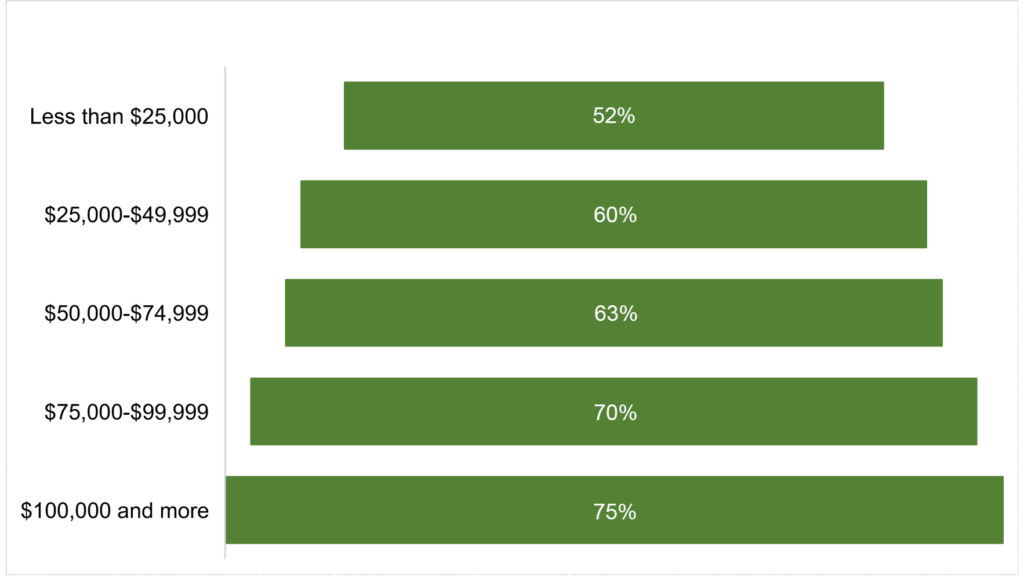
Source: NCR-Stat Baseline Survey, 2022
References
[1] Bednarikova, Z.; Marshall, M. I.; Wiatt, R. D.; Wilcox, Jr, M. D. (2022). North Central Region Household Data (NCR-Stat): Baseline Survey. Purdue University Research Repository. doi:10.4231/2DEM-Z333
[2] In this article, the responses ‘Strongly agree’ and ‘Agree’ are grouped in a single category ‘Agree,’ ‘Strongly disagree’ and ‘Disagree’ in a single category ‘Disagree,’ while ‘Neutral’ stays without changes.
[3] Due to the low number of respondents identifying themselves as Native Hawaiian and Other Pacific Islanders, this category was included in ‘Other races’ for this analysis.
[4] Our analysis does not include those who reported being non-binary as the number of respondents was too low to be analyzed.
[5] Percentage represents the shares of respondents that agree with the statement. ‘I do not know’ option was omitted for simplicity reasons. Categories over $100,000 were aggregated in ‘$100,000 and more’ to remain significant.
Author
Ivanna Carrillo-Siller, Graduate Research Assistant, North Central Regional Center for Rural Development
Download article
Suggested citation
Carrillo-Siller, I. (2023, March 22). Perception of Equal Access to Education in Communities of the North Central Region. North Central Regional Center for Rural Development. https://ncrcrd.ag.purdue.edu/2023/03/22/perception-of-equal-access-to-education-in-communities-of-the-north-central-region/
